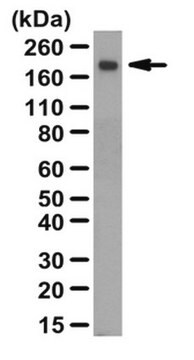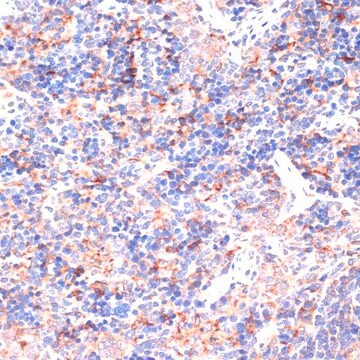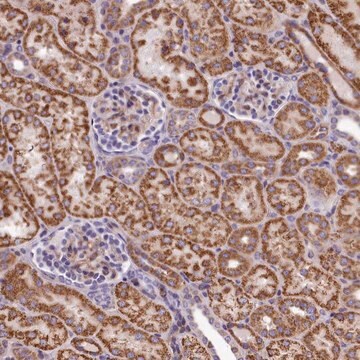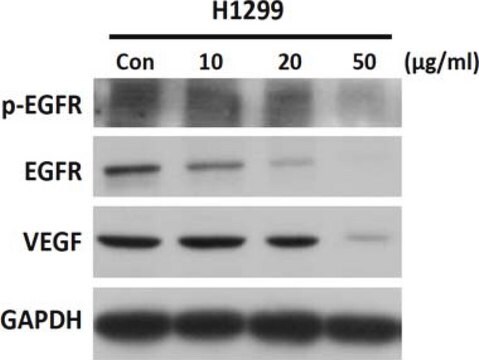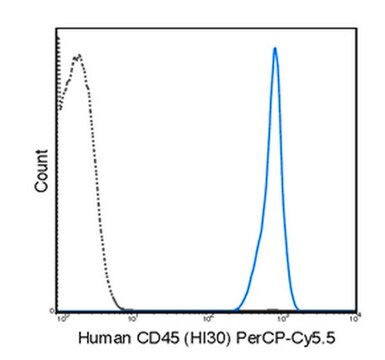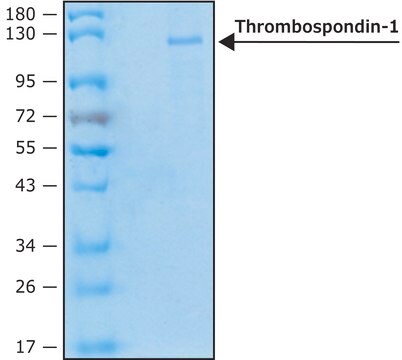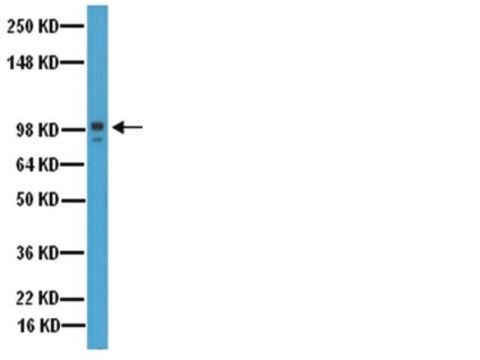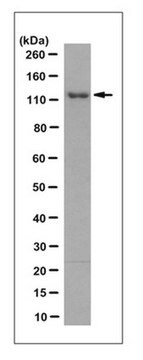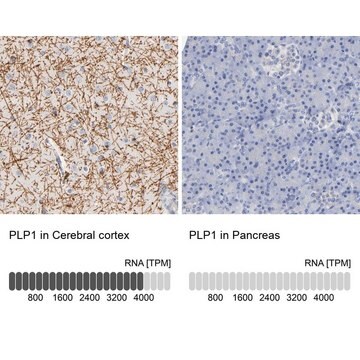MABT879
Anti-Thrombospondin-1 Antibody, clone 133
clone 133, from mouse
Synonim(y):
Thrombospondin-1, THBS-1, TSP-1
About This Item
Polecane produkty
pochodzenie biologiczne
mouse
Poziom jakości
forma przeciwciała
purified immunoglobulin
rodzaj przeciwciała
primary antibodies
klon
133, monoclonal
reaktywność gatunkowa
rat, human
metody
ELISA: suitable
immunohistochemistry: suitable (paraffin)
neutralization: suitable
western blot: suitable
izotyp
IgG2bκ
numer dostępu NCBI
numer dostępu UniProt
Warunki transportu
dry ice
docelowa modyfikacja potranslacyjna
unmodified
informacje o genach
human ... THBS1(7057)
Opis ogólny
Specyficzność
Immunogen
Zastosowanie
Cell Structure
ECM Proteins
Western Blotting Analysis: A representativev lot ditected full-length human thrombospondin-1 (hTSP-1) as well as hTSP-1 C-terminal fragments E3CaG (a.a. 648-1170), E3Ca (a.a. 648-945) and Ca (a.a. 692-945), but not hTSP-2, mouse TSP-1 (mTSP-1), or mTSP-2 by Western blotting under either reducing or non-reducing condition (Annis, D.S., et al. (2006). J. Thromb. Haemost. 4(2):459-468).
Western Blotting Analysis: A representative lot detected an upregulated thrombospondin-1 (TSP-1) in human pancreatic cancer Panc-1 cells upon siRNA-mediatted k-Ras knockdown (Fleming, J.B., et al. (2005). Mol. Cancer Res. 3(7):413-423).
Immunohistochemistry Analysis: A representative lot detected elevated thrombospondin-1 (TSP-1) immunoreactivity in vascular tissues surrounding stent materials due to in-stent restenosis (ISR) in paraffin-embedded sections of human coronary arteries from patients received either Taxus or Cypher drug-eluting stent implant (Pallero, M.A., et al. (2010). J. Vasc. Res. 47(4):309-322).
Neutralizing Analysis: Representative lots prevented alkaline-stripped human platelet thrombospondin-1 (sTSP-1) from activatating the latent form of TGF-beta secreted by cultured NMuMG murine mammary gland epithelial cells or bovine aortic endothelial (BAE) cells without affecting cellular signaling induced by the mature/active form of TGF-beta (Alcaraz, L.B., et al. (2014). J. Cell Biol. 205(3):409-428; Annis, D.S., et al. (2006). J. Thromb. Haemost. 4(2):459-468; Schultz-Cherry, S., and Murphy-Ullrich J.E. (1993). J. Cell Biol. 122(4):923-932).
Neutralizing Analysis: A representative lot inhibited stainless steel (SS) ions-induced TGF-β signaling in cultured primary rat vascular smooth muscle cells (VSMCs) as indicated by a suppressed induction of the synthetic/myofibroblastic protein ED-A FN (Pallero, M.A., et al. (2010). J. Vasc. Res. 47(4):309-322).
ELISA Analysis: A representativev lot ditected full-length human thrombospondin-1 (hTSP-1) as well as hTSP-1 C-terminal fragments E3CaG (a.a. 648-1170) and E3Ca (a.a. 648-945), but not hTSP-2, mouse TSP-1 (mTSP-1), or mTSP-2 by direct/non-sandwich ELISA (Annis, D.S., et al. (2006). J. Thromb. Haemost. 4(2):459-468).
Jakość
Western Blotting Analysis: 0.1 µg/mL of this antibody detected Thrombospondin-1 in 0.1 µg of human thrombospondin-1 purified protein.
Opis wartości docelowych
Postać fizyczna
Przechowywanie i stabilność
Handling Recommendations: Upon receipt and prior to removing the cap, centrifuge the vial and gently mix the solution. Aliquot into microcentrifuge tubes and store at -20°C. Avoid repeated freeze/thaw cycles, which may damage IgG and affect product performance.
Inne uwagi
Oświadczenie o zrzeczeniu się odpowiedzialności
Nie możesz znaleźć właściwego produktu?
Wypróbuj nasz Narzędzie selektora produktów.
Kod klasy składowania
12 - Non Combustible Liquids
Klasa zagrożenia wodnego (WGK)
WGK 2
Temperatura zapłonu (°F)
Not applicable
Temperatura zapłonu (°C)
Not applicable
Certyfikaty analizy (CoA)
Poszukaj Certyfikaty analizy (CoA), wpisując numer partii/serii produktów. Numery serii i partii można znaleźć na etykiecie produktu po słowach „seria” lub „partia”.
Masz już ten produkt?
Dokumenty związane z niedawno zakupionymi produktami zostały zamieszczone w Bibliotece dokumentów.
Nasz zespół naukowców ma doświadczenie we wszystkich obszarach badań, w tym w naukach przyrodniczych, materiałoznawstwie, syntezie chemicznej, chromatografii, analityce i wielu innych dziedzinach.
Skontaktuj się z zespołem ds. pomocy technicznej